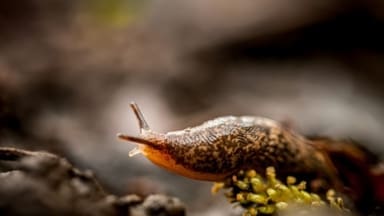
Data gathered from a project focused on slug species diversity in British gardens, aimed to understand the accuracy of (slug) species identification and its impact on calculating species richness, abundance, and diversity. A total of sixty participants were selected from over 2700 applicants across Britain to sample their gardens regularly for slugs following a standardised method. All slugs collected during the 30-min search were posted to the lead investigator for verification throughout the 12-month project. The resulting data were analysed to explore how accurate participants were in identifying slugs and whether this improved over the study period. Prior experience in slug identification was evaluated as a predictor of accuracy.
The main purpose of the project was to assess species diversity in gardens, but the secondary aim was to investigate how accurately citizen science participants can identify slugs to species, and whether the information they provide can be used to calculate accurate estimates of species richness, abundance and diversity measures. In addition, the researchers investigated whether prior experience of slug identification influenced accuracy, and if those with little or no prior identification experience improved over time to become as accurate as those individuals with intermediate to expert levels of experience. Self-perceived development in identification skills was also of interest, to establish whether participants felt that their slug identification skills increased due to participation in the project, and to identify whether this perceived improvement matched the measured change from the ecological data submitted.
The research findings, published in People and Nature, provid unique insight in to how often mistakes in species identification are made. Led by Newcastle University and the Royal Horticultural Society (RHS), the research team asked participants to carry out a torchlit search of their gardens once every four weeks, and to collect any slugs they found. Participants then attempted to identify them to species level, before sending them in to the researchers at RHS for identification. The scientists analysed the differences between the identifications made by project participants and the experienced slug researcher to ascertain how often mistakes in identification were made.
A total of 20,374 slugs were collected by participants and identified by the investigator, representing up to 34 species. There are over 40 species of slugs in the UK. A few species feed on garden plants, but most prefer to eat rotting material and could be considered a gardener’s friend. The research results show that the start of the project participants were correct in identifying slugs 47 – 56% of the time, but this improved to 59 – 70% by the end of the project. The study shows the potential of citizen science in ecological studies, while highlighting the importance of expert involvement and participant support to ensure data accuracy and sustained engagement.
Study lead author, Dr Imogen Cavadino, said: “Citizen science provided an effective approach to assess slug diversity across widespread geographic locations throughout a full year of sampling. Despite the complexity of the Slugs Count protocol, there was a high level of engagement throughout the study, and the resulting high-quality dataset contributes hugely to our understanding of the current status of slugs in British gardens. Our study shows that training and support can help people stay engaged with a project and produce useful results, even with a demanding procedure and tricky to identify study group such as slugs.”
Reference: Cavadino, I., Port, G., Mill, A., Clover, G., Roy, H. E., & Jones, H. (2024). Slugs Count: Assessing citizen scientist engagement and development, and the accuracy of their identifications. People and Nature, 00, 1–16. https://doi.org/10.1002/pan3.10677

